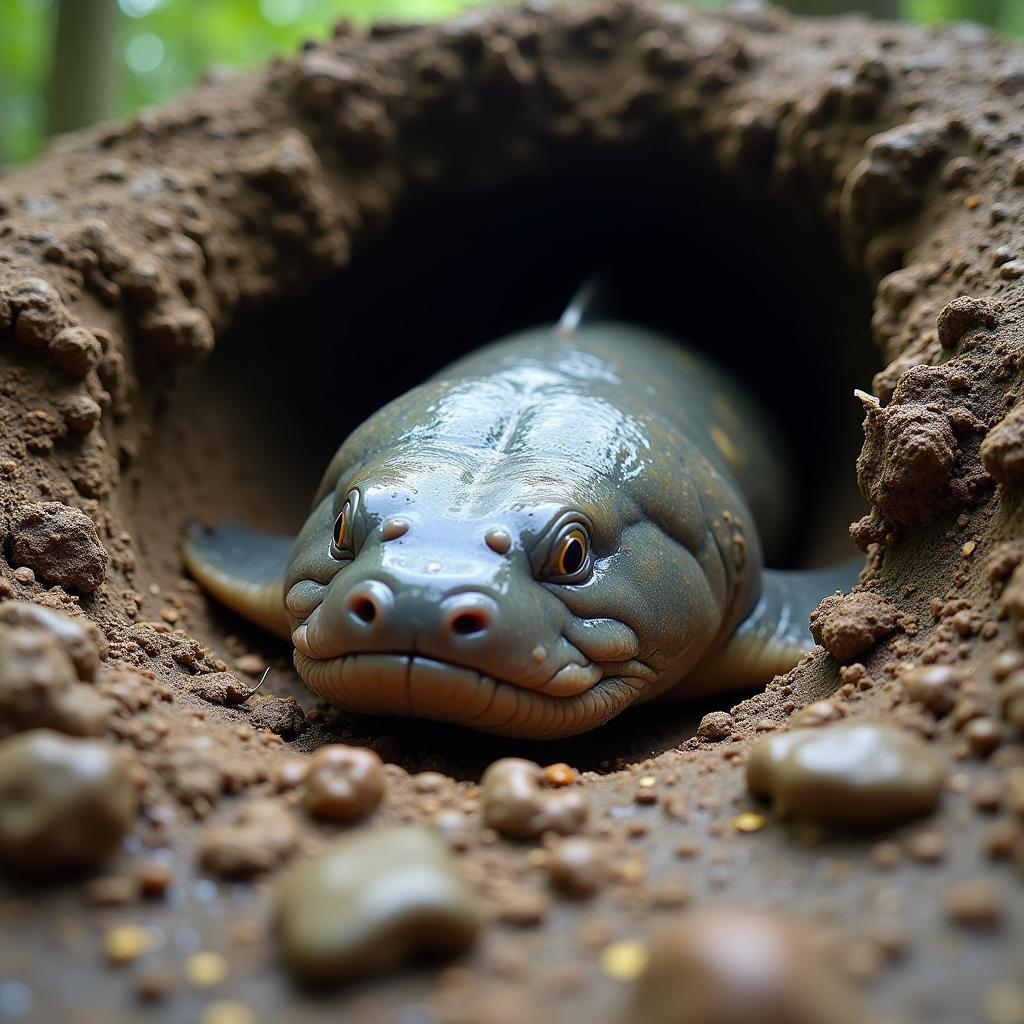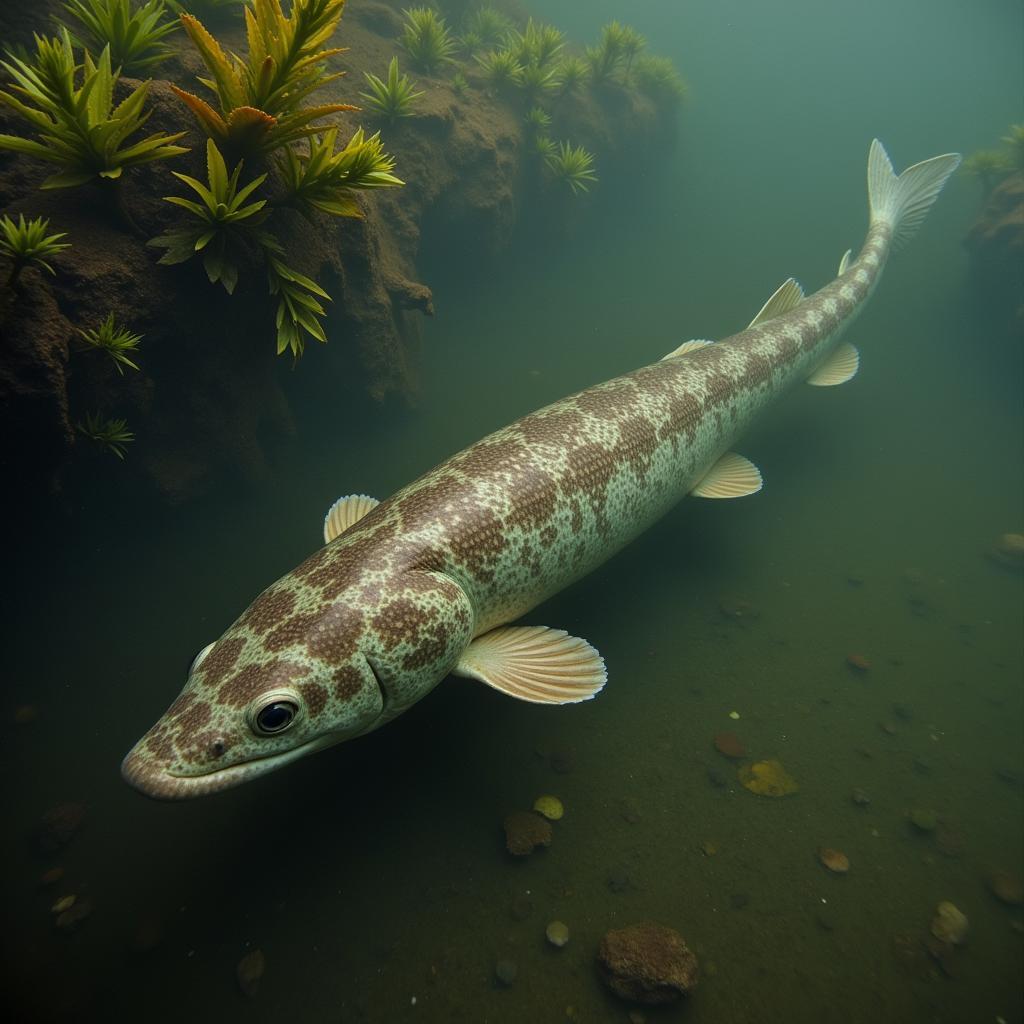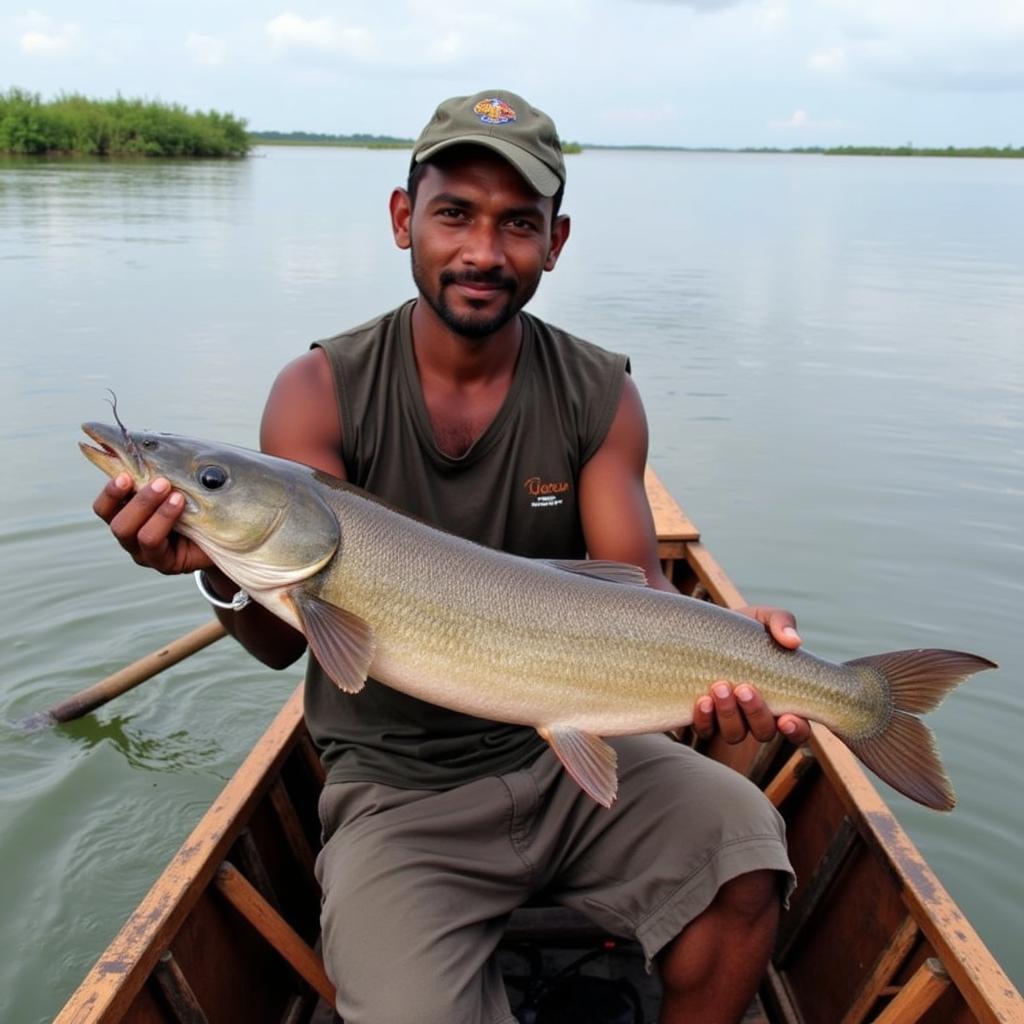African Fish That Live Without Water: Unveiling the Lungfish’s Secrets
The African continent holds a mesmerizing array of creatures, each uniquely adapted to their environment. Among them are fish that seem to defy nature’s rules—fish that can live without water. These remarkable creatures, known as lungfish, inhabit the freshwater rivers and lakes of Africa, showcasing an evolutionary marvel that has captivated scientists and nature enthusiasts alike.
A Fish Out of Water: The Lungfish’s Unique Adaptation
Lungfish, as their name suggests, possess a unique adaptation that sets them apart from their aquatic counterparts—lungs. While most fish rely solely on gills to extract oxygen from water, lungfish have developed a specialized respiratory system that allows them to breathe air directly. This remarkable adaptation enables them to survive in environments where water sources dwindle, forcing them to endure periods of drought.
 African Lungfish Estivating
African Lungfish Estivating
Estivation: The Lungfish’s Secret to Survival
During dry seasons, when rivers and lakes shrink, African lungfish retreat into the mud, creating a cocoon-like structure to conserve moisture. This dormant state, known as estivation, allows them to survive for months, even years, without access to water. Within their muddy haven, lungfish slow their metabolic rate dramatically, reducing their energy consumption to a minimum. Their lungs take center stage, allowing them to extract oxygen from the air trapped within the cocoon.
 African Lungfish Anatomy
African Lungfish Anatomy
African Lungfish Species: Diversity in Adaptation
Africa is home to four extant species of lungfish, each exhibiting unique adaptations to their specific habitats:
1. West African Lungfish (Protopterus annectens)
Found throughout West and Central Africa, the West African lungfish is known for its slender body and ability to estivate in mud burrows. This species is relatively widespread and is often kept in aquariums, offering insights into its intriguing behavior.
2. Marbled Lungfish (Protopterus aethiopicus)
Inhabiting the Nile River basin and East African lakes, the marbled lungfish is the largest of the African lungfish species. It is distinguished by its mottled pattern and possesses a remarkable ability to survive in oxygen-deprived waters.
 Marbled Lungfish in Lake Victoria
Marbled Lungfish in Lake Victoria
3. Gilled Lungfish (Protopterus amphibius)
Found in East Africa, the gilled lungfish is unique for its relatively well-developed gills, allowing it to rely more on aquatic respiration than its counterparts. However, it still possesses the ability to estivate during dry periods.
4. Spotted Lungfish (Protopterus dolloi)
Confined to the Congo River basin, the spotted lungfish is characterized by its distinct spotted pattern. It shares similar estivation strategies with other African lungfish species, surviving harsh conditions by burrowing into the mud.
The Lungfish’s Place in African Culture and Ecology
The lungfish’s remarkable resilience has not gone unnoticed by the people of Africa. In some regions, lungfish are considered a delicacy, often harvested during the dry season when they are readily accessible in their mud burrows. However, overfishing and habitat destruction pose threats to some lungfish populations.
 Local Fisherman and Lungfish
Local Fisherman and Lungfish
Lungfish: A Living Fossil
Beyond their cultural significance, lungfish hold a special place in evolutionary history. These ancient fish are considered “living fossils,” with their lineage tracing back over 400 million years. Studying lungfish provides valuable insights into the evolutionary transition of vertebrates from water to land, shedding light on the development of lungs and limbs in early tetrapods.
Conclusion
The African fish that live without water, the lungfish, stand as a testament to the power of adaptation in the animal kingdom. Their ability to breathe air, survive drought through estivation, and thrive in challenging environments continues to fascinate and inspire. As we delve deeper into the lungfish’s secrets, we gain a greater appreciation for the incredible biodiversity that graces our planet and the importance of conserving these evolutionary marvels for generations to come.

